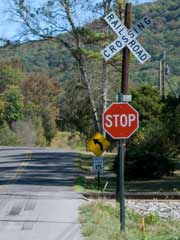Boise, ID — A 77 year-old man died after his car was hit by an oncoming BNSF train in a railroad crossing accident near Bonners Ferry in Northern Idaho. The car and train crash occurred at a private crossing near the city’s municipal golf course. It is being investigated by the Idaho State Police and BNSF.
The accident occurred at about 8:15 A.M.. It is reported that the driver of the car was not wearing his seatbelt when he was hit by the train. The railroad crossing was equipped with a stop sign and warning signal, but did not have a railroad crossing gate. There is a is 40 M.P.H. speed limit for trains on the section of the track where the crash occurred.
The BNSF train was empty and powered by three locomotive engines. The damage to the lead engine was so severe that it may be taken out of service. The train was traveling from Portland, OR to eastern Montana.
The man who died in the crash was driving a 2002 Volkswagen Jetta. He is reported to have been pulling out of his tree farm nursery when his car was hit by the empty BNSF train at the crossing.
Do you need a top national railroad crossing accident lawyer. Our railroad crossing accident attorney law firm helps people who have been affected by railroad crossing accidents recover financial compensation for personal injury and wrongful death damages. If you or a loved one has suffered a serious personal injury or wrongful death in a train accident at a railroad crossing, contact us today for a free, no-obligation legal consultation. Railroad crossing safety is no accident. Let a top railroad lawyer help you recover the compensation you deserve.



